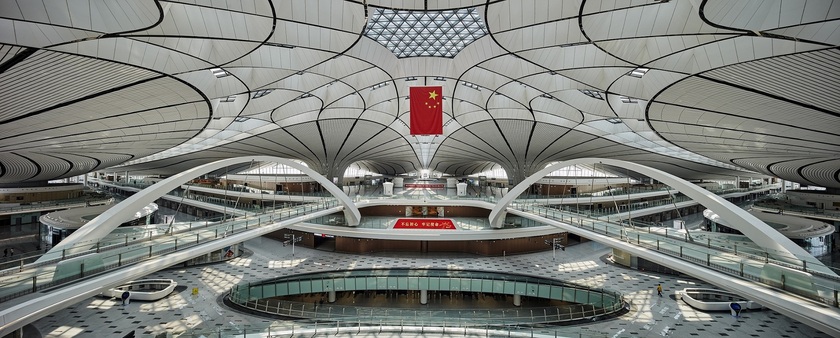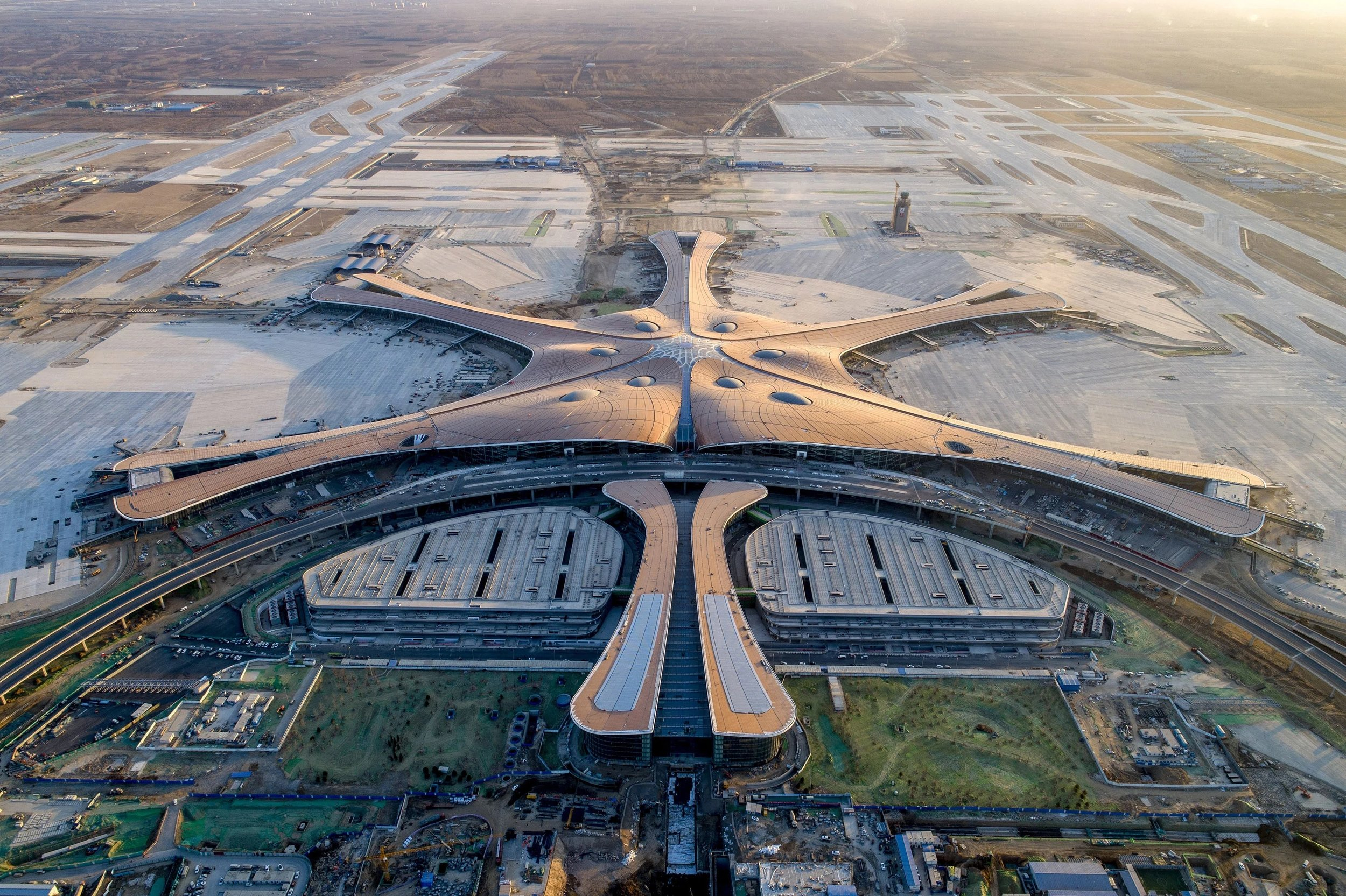When mentioning Beijing, people often imagine ancient structures such as the Forbidden City or Tiananmen Square. But now, in the sky of this most modern city, Beijing Daxing Airport (or Daxing Airport) - "starfish airport" - is shining with its splendid beauty and grand scale. Opened on the occasion of China's 70th National Day in 2019, Daxing Airport is not only the largest airport in the world, but also a work of art that perfectly combines architecture and technology, creating an unforgettable experience for anyone who has ever set foot here.
Design like a dream flying high
Designed by architect Zaha Hadid, Daxing Airport was inspired by the image of a giant phoenix spreading its wings to the sky, but the media often calls this airport with the nickname "starfish airport" because of its special architectural shape. This architecture is not only beautiful but also brings excellent operational efficiency with 7 floors and smartly arranged check-in, security and boarding gates.
Passengers will be transported through light-filled corridors under a dome made from more than 8,000 different pieces of glass, experiencing a space that both preserves traditional cultural characteristics and is the most modern and convenient, with every detail designed to save time and create a feeling of comfort.



The soft and supple architecture, taking advantage of natural light in a sophisticated way, bears the mark of Zaha Hadid.
The great thing is that even though the airport terminal area is up to 700,000 m², equivalent to the area of... 97 football fields, you will not have to worry about traveling between areas. Thanks to the "one-stop" design system, from the check-in area, passengers can easily access the boarding gates within just 8 minutes of travel. Everything is arranged so that passengers can enjoy every moment here, instead of feeling like they are lost in a giant maze.

Modern architecture and technology inside Daxing airport
Future technology and modern experience
If you think an airport is just a place to wait for your flight, Dai Hung will change your mind. This is a space of constant movement and the most advanced technology. Robot guides, facial recognition systems that help you go through processes in the blink of an eye, and natural light that permeates the corridors are all proof of an airport space that is geared towards the future.
Here, there are full range of high-end services such as restaurants, shopping areas with a series of duty-free shops of luxury brands, to performing arts stages, working areas,... and even pet hotels. Daxing Airport is like a miniature city, where boring connecting times turn into a trip to enjoy modern life with full amenities.

Here, there are full range of high-end services such as restaurants, shopping areas with a series of duty-free shops of luxury brands, to performing arts stages, working areas,... and even pet hotels.
Gateway to the future and culture
Daxing Airport is not only a gateway connecting Beijing to the world, but also a new cultural symbol of the city. It plays a key role in promoting the tourism economy and enhancing China's position on the international aviation map. With flights connecting major cities around the world, Daxing Airport is gradually asserting its position as the world's busiest and most important air traffic hub.
But the most wonderful thing about Dai Hung is the blend of tradition and modernity, with the main highlight being the gardens and green spaces that are cleverly arranged, creating the feeling of being lost in a traditional oasis in the heart of modernity. You can also come across small corners designed with inspiration from classical Chinese architecture, such as curved domes, interwoven with modern lighting and spacious open spaces. This creates an experience that is not just about moving, but also a journey of cultural and architectural discovery.

At the end of the main corridor of the airport terminal, there are five gardens with corresponding names: "Silk Garden", "Tea Garden", "Ceramic Garden", "Suburban Garden" and "Chinese Garden". All are designed with strong imprints of ancient Chinese culture.
The future of long-distance flights
With its massive size and ever-growing ambitions, Beijing Daxing Airport promises to be the world’s largest aviation hub by 2040. Plans to expand to seven runways and increase capacity to 100 million passengers a year are just the beginning of not just an airport, but a statement of China’s vision: to make the country the hub of all flights, connecting cultures and bringing the world closer to Beijing.


































